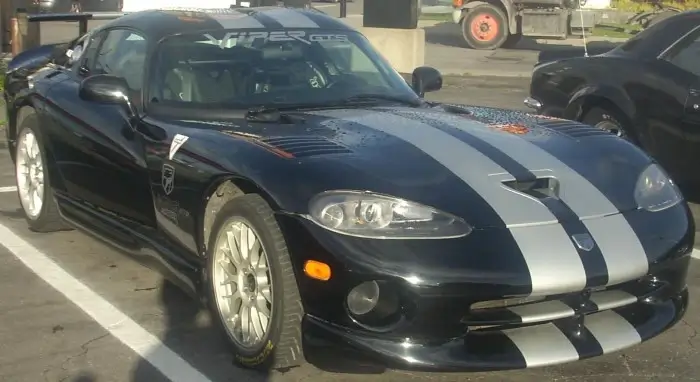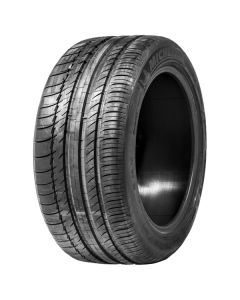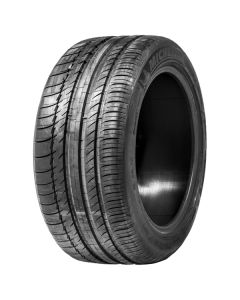Chrysler Dodge Viper Tyres

Dodge Viper GTS SRT 10
Chrysler Dodge Viper 1991–2010
- If your Chrysler Dodge Viper is sporting 16" wheels then Longstone recommends 225/50 R 16 Michelin Pilot Sport for the front, and 255/50 YR 16 Michelin Pilot Sport for the back.
- However, if your Chrysler Dodge Viper is equipped with 17" wheels, then we would suggest 275/40 YR 17 Michelin Pilot Sport PS2 for the front, and 335/35 YR 17 Michelin Pilot Sport PS2 for the rear.
History of the Chrysler Dodge Viper
In January 1989, the first Dodge Viper prototype was tested. When Dodge was obliged to replace the Japanese-built Dodge Stealth with the RT/10 Roadster, it debuted in 1991 with two pre-production models as the pace car for the Indianapolis 500. It went on sale in January 1992 as the RT/10 Roadster. Lamborghini (when owned by Chrysler) contributed to the development of the Viper's V10 engine, which was based on Chrysler's LA V8 engine.
The Viper was originally designed to be a performance car, with no exterior-mounted door handles or key cylinders, as well as no air conditioning (however, this was added as an option for the 1994-95 models). The top was canvas, and the windows were vinyl, with zippers to open and close, not unlike the Jeep Wrangler. The Viper did, however, have certain domestic elements, such as manually adjustable leather-trimmed sport bucket seats with lumbar support, an AM-FM stereo cassette player with clock and high fidelity sound system, and inside carpeting. Because of the bigger brakes, the aluminium alloy wheels had a greater diameter. On later versions, a lightweight fibreglass hard roof option was also available to cover the canvas soft roof, and each new car came with one. For the purpose of saving weight, there were no airbags. Most Vipers also had an option for adjustable performance suspension.
The engine weighs 323 kg and produces 400 horsepower at 4,600 rpm and 465 pound-feet of torque at 3,600 rpm. The body is made of a tubular steel frame with fibreglass panels made of resin transfer moulding (RTM). The Viper weighs 1,490 kg and lacks contemporary driving aids like traction control and anti-lock brakes. The SRI can accelerate from 0 to 62 mph in 4.2 seconds, from 0 to 100 mph in 9.2 seconds, complete the quarter-mile in 12.6 seconds at 113.8 mph, and reach a top speed of about 165 mph. Because of its big tyres, the vehicle can average close to one lateral g in turns. However, the automobile is difficult to operate at high speeds, especially for inexperienced drivers.





